
We supply Motorized Pulley belt conveyor drives, serving equipment manufacturers directly and end users through a network of independent distributors & local service providers throughout the United States and Latin America.
HOW TO SOLVE CONVEYOR DRIVE MAINTAINABILITY PROBLEMS
This is the second in our “Work from Home” video series. Today is April 4th and our topic is conveyor drive maintainability. This video is sponsored by Rulmeca Corporation in Wilmington, North Carolina. I’m your host, Mike Gawinski. We produce Motorized Pulleys for the U.S. materials handling market.
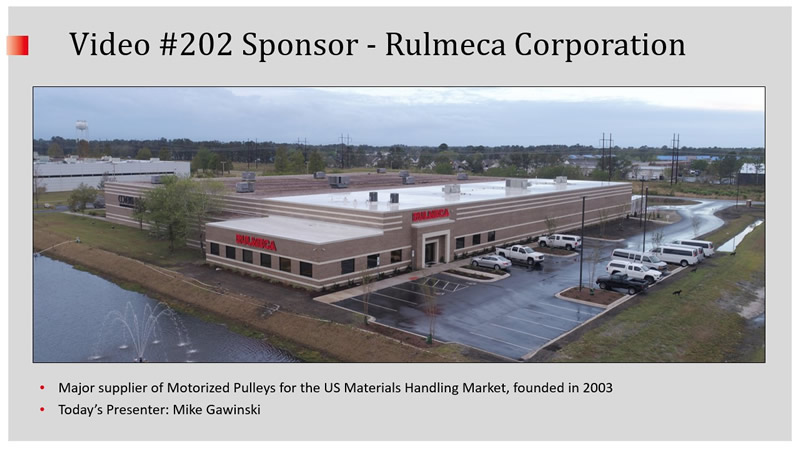
We’re part of the International Rulmeca Group, a major supplier of rollers, Motorized Pulleys, pulleys, and components for the global materials handling market.

Rulmeca Corporation is designated essential during the COVID-19 response. Therefore, we are continuing to produce and repair Motorized Pulleys at our facility. However, our sales and administrative staff are working from home, including myself, today. This video is a service to any personnel working from home who are interested in belt conveyor operation and maintenance.
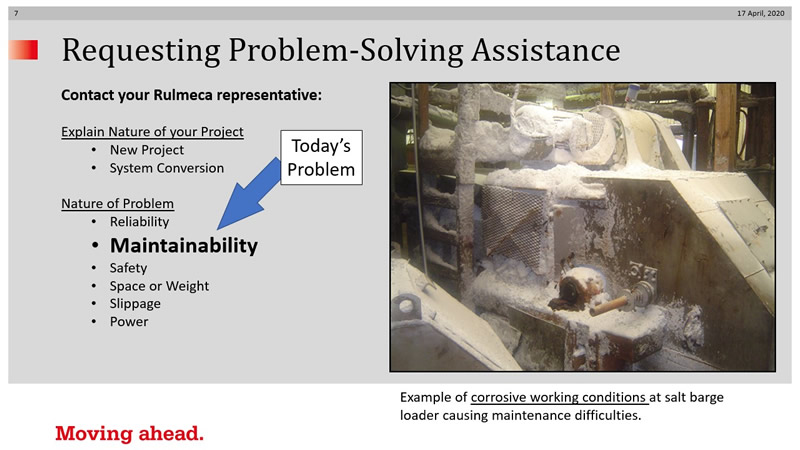
To obtain help with conveyor belt power calculations and solve conveyor drive maintainability problems, we suggest you do the following:
- Identify the conveyor drive problem
- Request technical assistance
- Consider potential solutions
- Obtain and consider a commercial offer
What are the reasons for belt conveyor drive maintainability problems? They could be any one of the following:
- Age of an existing exposed drive system
- Lack of maintenance of a drive system
- no convenient personnel access
- the location may be high or restricted
- Harsh operating conditions
- corrosive or abrasive minerals
- frequent high-pressure and high-temperature wash down.
We recommend you contact your Rulmeca representative, whether it be our local rep, our local independent distributor, or one of us and send us an application data sheet (downloadable from our website or available online).
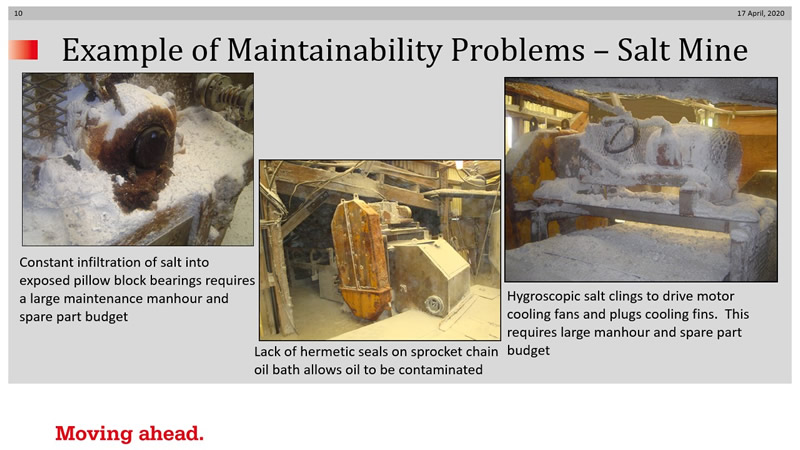
In this exposed drive system at a salt barge loading facility constant infiltration of salt into the external pillow block bearings (left) requires a large maintenance man hour and spare parts budget. Lack of hermetic seals on the sprocket and chain oil bath (center) allows oil to be contaminated, which is not optimal. Hygroscopic salt clings to exposed cooling fans (right) and plugs cooling fins, making it difficult to cool the motor.
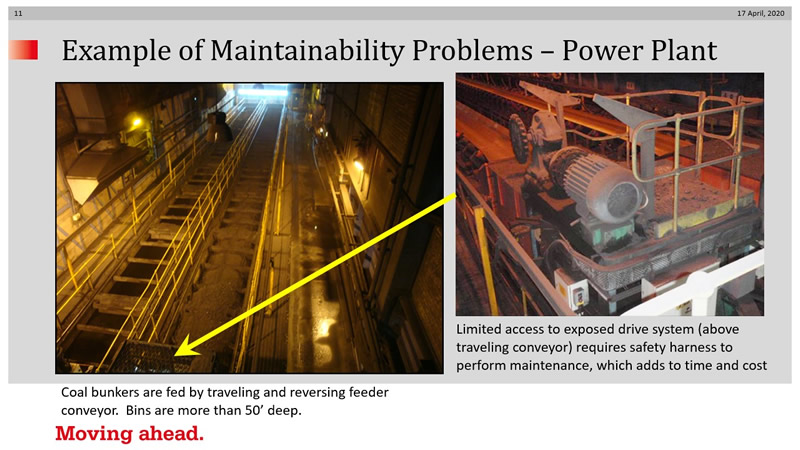
In this European coal fired power plant, 50-foot-deep bunkers (left) are fed from above by a reversing traveling conveyor. The exposed drive system (right) powers the belt in that shuttle feed and is mounted on top of the discharge chute. Personnel access is limited (this photo was taken prior to its removal). It would be a good idea to use a harness when climbing on top of the chute to maintain this drive. We will revisit this issue in our “safety” video.
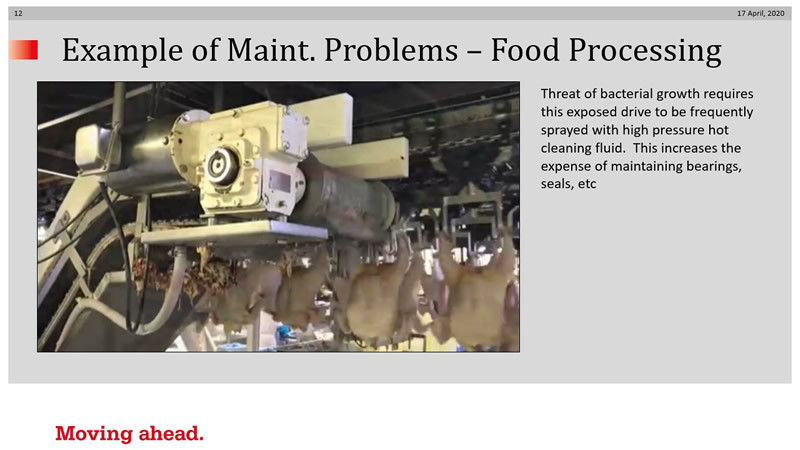
In this food processing application, the threat of bacterial growth requires that the exposed drive to be frequently sprayed with high pressure, hot cleaning fluid. That increases the expense of maintaining bearings, seals, and other external components.

The Motorized Pulley is an excellent solution to maintainability problems. This technology is unfamiliar to some people. Its hermetically-sealed, internally-powered, and self-lubricating design protects all mechanical and electrical components from attack. The cutaway shows that motor bearings, gearbox gears and bearings, and the main bearings are in there are all protected by an IP67 hermetic sealing system.
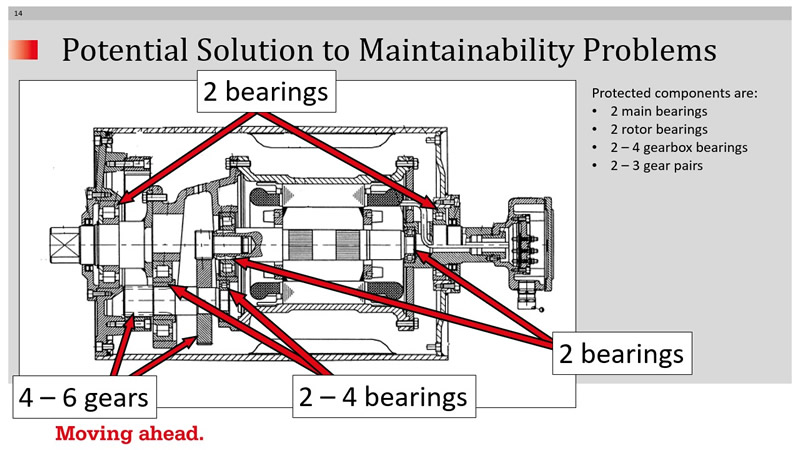
This cross section shows that the hermetic seals protect the two main bearings, which would normally be external pillow block bearings. Note also that the motor rotor bearings are protected and automatically lubricated by the oil. Ordinarily, exposed motor rotor bearings are not re-greased after they leave the production plant. Finally, four to six gears and the two to four gearbox bearings are also enclosed in that environment.
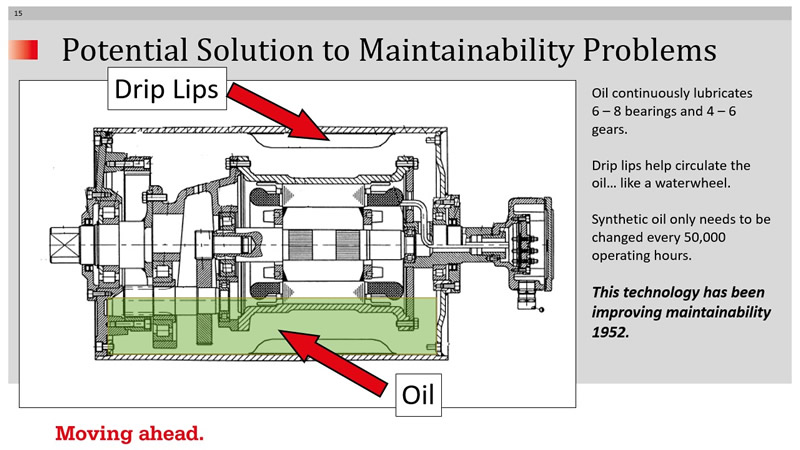
Motorized Pulleys are filled with oil, which circulates by two drip lips, to continuously lubricate six to eight bearings and four to six gears. Synthetic oil only needs to be changed every 50,000 operating hours. This is our recommendation on how to solve maintainability problems. We developed this technology in the early 1950s. This is not a new idea.
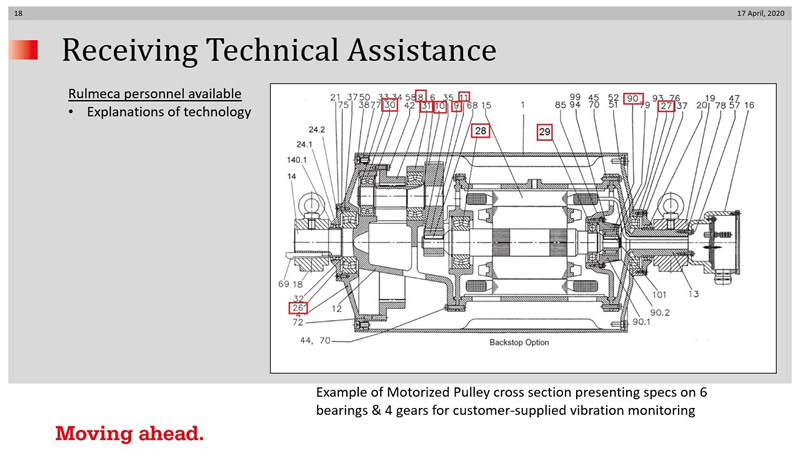
When technical assistance is requested, we supply power calculations, material cross section, and trajectory plots using the CEMA historical method. We also provide special information, when requested, to improve drive maintainability. We not only prepared this diagram for a customer planning to use vibration analysis, but also the number of rollers in each bearing and number of teeth in each gear.
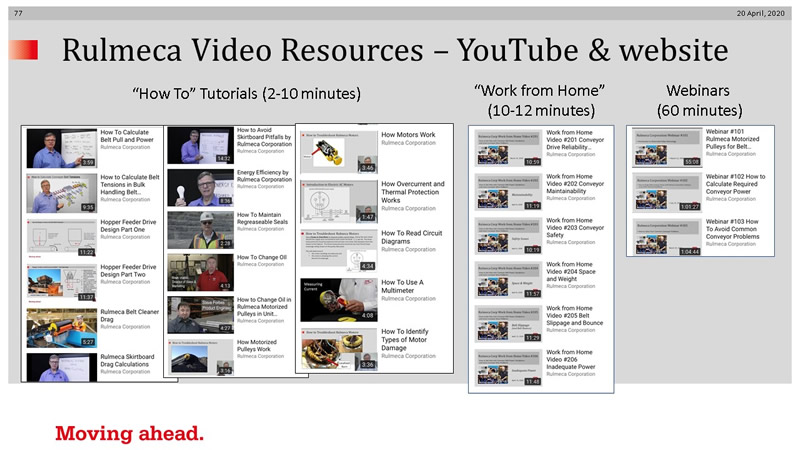
That concludes our short talk on conveyor drive maintainability. I draw your attention to our growing library of video tutorials, which you can find on our website and our YouTube channel, along with all of the webinar recordings and all of the Work from Home videos. Just go to rulmecacorp.com or go to our YouTube channel.
We encourage you to contact us via email at sales-us@rulmeca.com, or call us. Thank you for your attention. I encourage you to do what we’re trying to do, which is to keep our chins up while we endure this virus crisis. Thank you.
